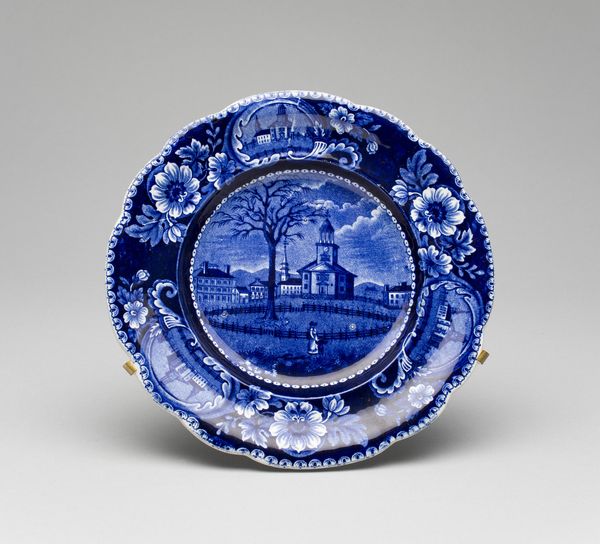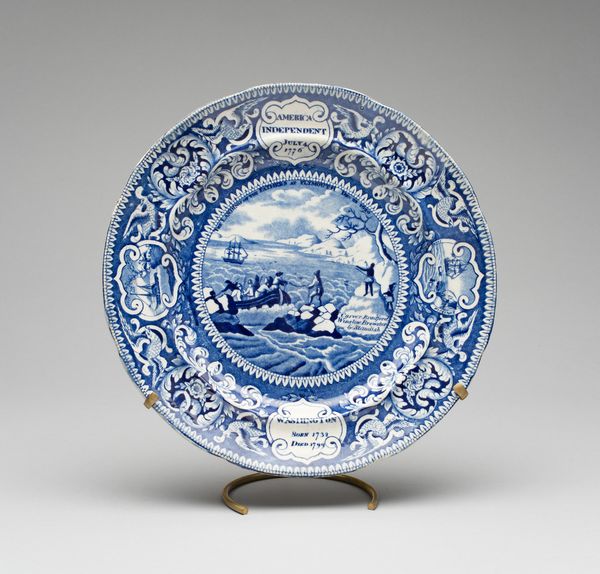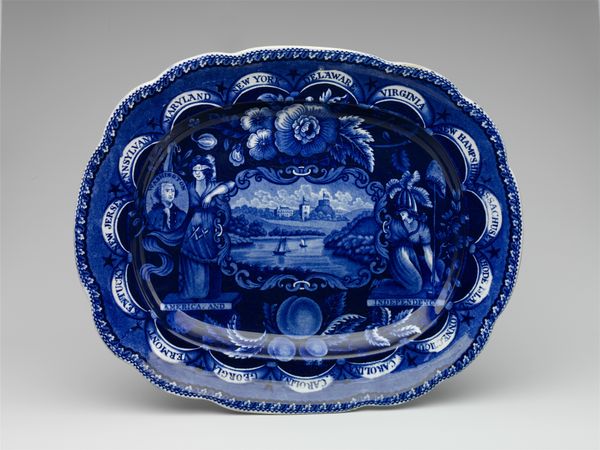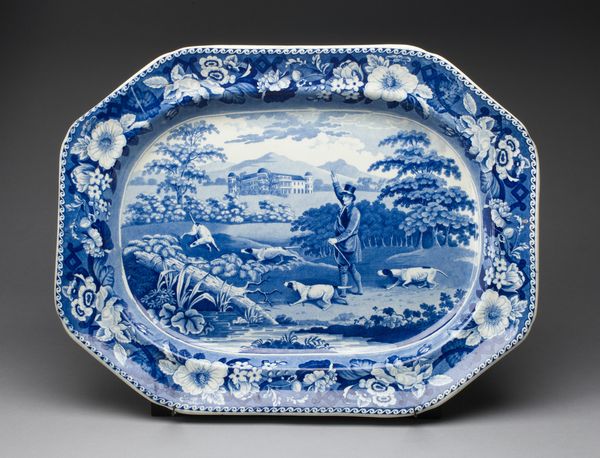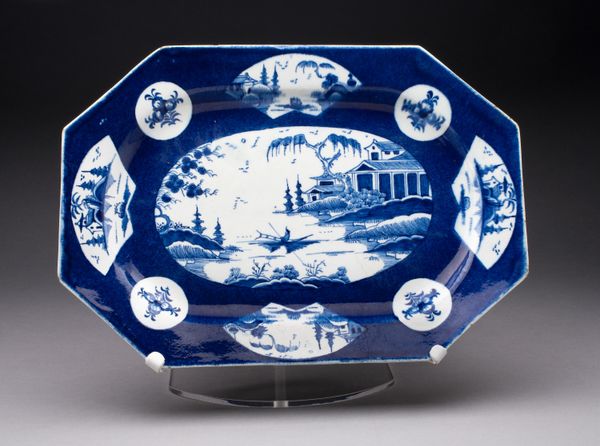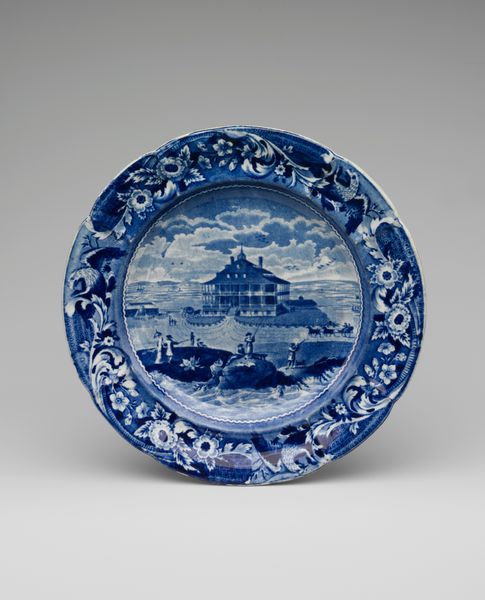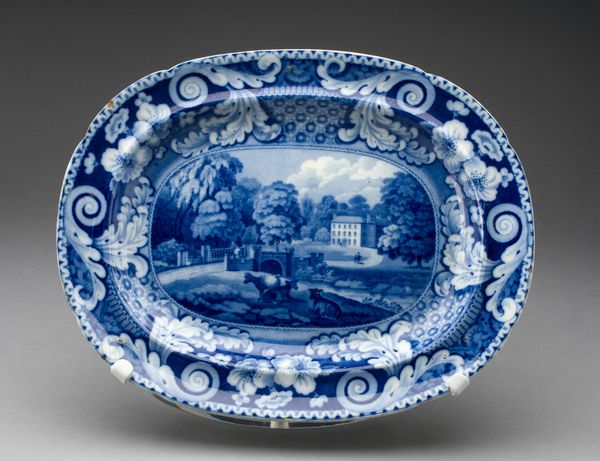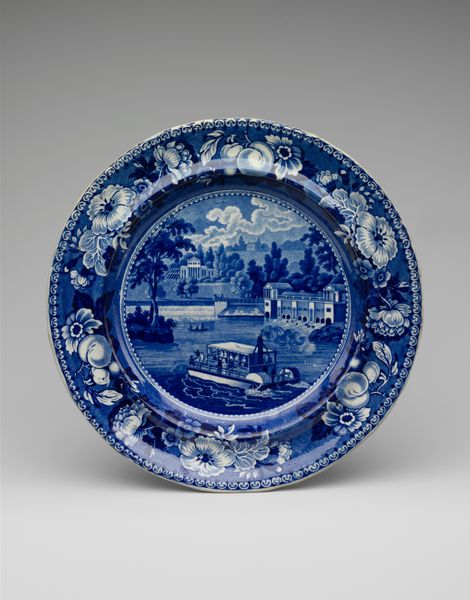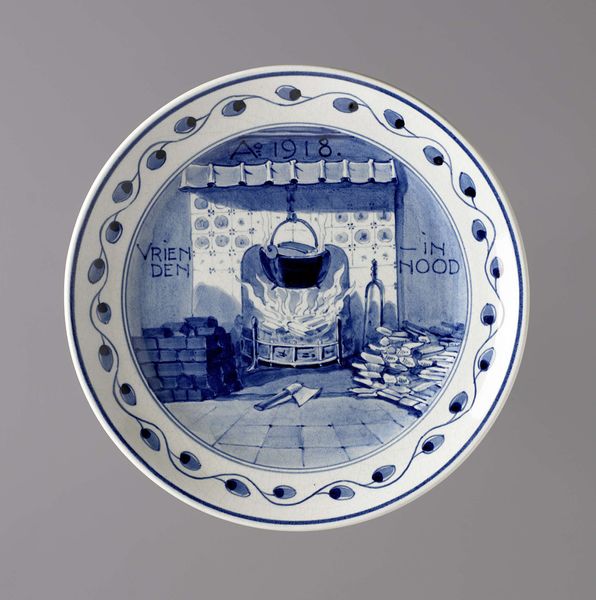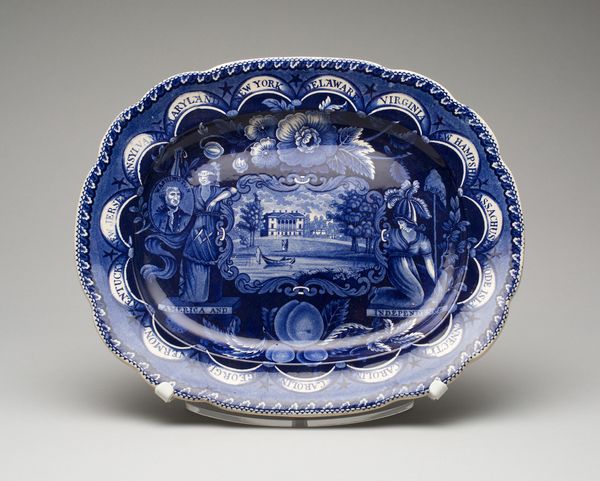
print, etching, ceramic
# print
#
etching
#
landscape
#
ceramic
#
vessel
#
romanticism
#
history-painting
#
decorative-art
Dimensions: 48.9 × 37.5 cm (19 1/4 × 14 3/4 in.)
Copyright: Public Domain
This platter was made by Clews Pottery in the early 19th century, using earthenware and transfer printing. The distinctive blue and white pattern wasn’t painted freehand. It was created by engraving a copper plate, inking it, and then transferring the image onto thin tissue paper. This paper was then carefully applied to the ceramic surface before firing. This process allowed for detailed images to be reproduced quickly, making decorative ceramics more accessible to a wider market. Here, the image commemorates General Lafayette's visit to the United States in 1824. The use of mass-production techniques, in this case, reflects the increasing industrialization of the pottery industry during this period. It also tells us about the social and political values cherished at the time, celebrating revolutionary heroes through affordable, mass-produced objects. Considering the materials, making, and social context helps us to move beyond the traditional distinctions between decorative and fine art.
Comments
No comments
Be the first to comment and join the conversation on the ultimate creative platform.
